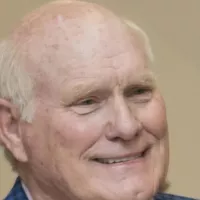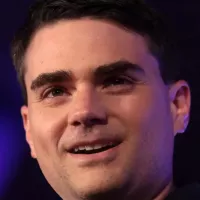The Weather Channel (TWC) is an American pay television channel launched in 1982, providing weather forecasts, news, analysis, documentaries, and weather-related entertainment. Headquartered in Atlanta, Georgia, it's owned by Weather Group, LLC, a subsidiary of Allen Media Group. TWC previously operated Weatherscan, a 24-hour automated local forecast service that ceased operations in December 2022. Additionally, The Weather Channel produces weathercasts for other networks like CBS News and RFD-TV.
July 18, 1980: The Weather Channel Founded
On July 18, 1980, The Weather Channel was founded by John Coleman and Frank Batten.
May 2, 1982: The Weather Channel Launch
On May 2, 1982, The Weather Channel was launched, broadcasting weather forecasts, news, and analysis, along with weather-related documentaries and entertainment programming.
1982: Bill Keneely First Broadcast
In 1982, Bill Keneely appeared on the network's first broadcasts.
1996: Logo revision
In 1996, The Weather Channel revised its logo, making the corners less rounded and the logo slightly flatter.
1999: weather.com added to logo
In 1999, the weather.com URL text was permanently added underneath The Weather Channel's logo.
2000: Introduction of Long-Form Programming
In 2000, The Weather Channel began incorporating weather-related original programming, referred to as "long-form programming", marking a shift from its exclusive focus on weather forecast programming.
2000: Creation of Atmospheres
In 2000, The Weather Channel created the series Atmospheres.
2000: Release of The Perfect Storm
In 2000, the film "The Perfect Storm" was released. The Weather Channel would begin airing the movie on October 30, 2009.
2002: Forecasting Centralized in Atlanta
Since 2002, all weather forecasting for The Weather Channel has been done on-site in Atlanta.
2003: Possible stagnation of some localized forecast websites
As of 2003, some of The Weather Channel's localized forecast websites may not have developed since then.
2003: Creation of Storm Stories
In 2003, The Weather Channel created the series Storm Stories.
August 15, 2005: Logo Overhaul
On August 15, 2005, The Weather Channel's logo was overhauled with a straight-edged square and title-case, left-justified text.
October 1, 2007: First HD Programs
On October 1, 2007, "Epic Conditions" and "WeatherVentures" became the first two programs on The Weather Channel to be presented in high definition (HD).
2007: 25th-anniversary logo
In 2007, a 25th-anniversary logo was used, featuring a white square edged in blue connected to the current logo with the text "25 YEARS" inside it in blue.
January 3, 2008: Landmark Communications Puts the Weather Channel Up for Sale
On January 3, 2008, Landmark Communications put The Weather Channel and its assets up for sale.
June 2, 2008: HD Studio Programming Begins
On June 2, 2008, TWC began broadcasting studio programming in high definition with a new studio featuring environmentally friendly technologies.
July 6, 2008: NBC Universal, Bain Capital, and Blackstone Group Agree to Purchase the Weather Channel
On July 6, 2008, NBC Universal, Bain Capital, and Blackstone Group agreed to jointly purchase The Weather Channel from Landmark Communications, marking the channel's first ownership change in 26 years.
September 12, 2008: Sale of the Weather Channel Finalized
On September 12, 2008, the sale of The Weather Channel to NBC Universal, Bain Capital, and Blackstone Group was finalized.
November 2008: Layoffs at The Weather Channel
Starting in November 2008, The Weather Channel began laying off long-time on-camera meteorologists.
2008: "Green is Universal" campaign participation
In 2008, when NBCUniversal acquired the network, The Weather Channel participated in the "Green is Universal" campaign, changing its logo to a shade of green.
February 2009: Continuation of Layoffs at The Weather Channel
By February 2009, The Weather Channel continued its layoffs of long-time on-camera meteorologists.
May 2009: Merger of NBC On-Air Meteorologists
In May 2009, the merger of NBC on-air meteorologists began with Todd Santos joining The Weather Channel on May 2. Al Roker also began hosting 'Wake Up With Al'.
September 10, 2009: Death of Frank Batten
On September 10, 2009, The Weather Channel co-founder Frank Batten died.
September 29, 2009: Local on the 8s in HD via DirecTV App
On September 29, 2009, DirecTV began carrying the "Local on the 8s" segment in HD via an app on set-top boxes.
October 30, 2009: Airing of weather-related movies
On October 30, 2009, The Weather Channel began airing weather-related movies on Friday nights, starting with the film "The Perfect Storm".
December 2009: Weekly movies discontinued
After December 2009, the weekly movies were discontinued in favor of running Weather Center, which already aired throughout primetime during the rest of the work week.
2009: Mike Kelly Appointed as CEO
In the summer of 2009, Mike Kelly was appointed as the company's CEO.
March 26, 2010: "Flick and a Forecast" Resumes
On March 26, 2010, the Friday night film block resumed under the title "Flick and a Forecast," co-hosted by the Weather Channel meteorologist Jen Carfagno and MSNBC contributor Touré, with the documentary "Into Thin Air: Deaths on Everest".
April 2010: Tornado outbreak/Snafu
During an April 2010 tornado outbreak, a scheduled movie aired instead of wall-to-wall severe weather coverage, contributing to the cancellation of "Flick and a Forecast".
May 20, 2010: Dish Network drops The Weather Channel
On May 20, 2010, Dish Network announced it was dropping The Weather Channel at 12:00 a.m. Eastern Time in favor of its own weather information channel, the Weather Cast, due to a carriage dispute over rates and programming format.
May 24, 2010: New agreement with Dish Network
On May 24, 2010, The Weather Channel announced a new multi-year carriage agreement with Dish Network, averting its removal. The Weather Cast ceased operations and a Weatherscan-based service was announced.
May 31, 2010: "Flick and a Forecast" Cancelled
On May 31, 2010, the Weather Channel decided to cancel the movie block "Flick and a Forecast" due to viewer criticism and a snafu during an April 2010 tornado outbreak.
July 2010: IntelliStar 2 Release
In July 2010, The IntelliStar 2, the seventh-generation STAR system and the first to generate graphical weather data in HD, was officially released with an animated Lower Display Line and a Vocal Local narration track recorded by TWC meteorologist Jim Cantore.
July 2010: Termination of Bill Keneely
In July 2010, The Weather Channel terminated Bill Keneely, the last of the original on-camera meteorologists who appeared on the network's first broadcasts.
January 2012: David Kenny Takes Over as CEO
In January 2012, David Kenny replaced Mike Kelly as chief executive officer of The Weather Channel.
July 2012: Purchase of Weather Underground
In July 2012, the Weather Company purchased the competing weather website Weather Underground to bolster its digital growth.
September 2012: AccuWeather replaces TWC in USA Today
In September 2012, AccuWeather replaced The Weather Channel as the forecast provider for USA Today.
November 7, 2012: NWS Refuses to Recognize TWC Winter Storm Names
On November 7, 2012, the National Weather Service announced that it would not recognize The Weather Channel's names for winter storms. The NWS stated that it does not use the names of winter storms in its products.
November 2012: First Winter Storm Named by TWC
In November 2012, the first winter storm to be named by The Weather Channel was a nor'easter that hit the East Coast, named Athena.
2012: Nicole Mitchell Files Lawsuit
In 2012, Nicole Mitchell filed a lawsuit against The Weather Channel, alleging wrongful termination.
2012: Name change and purchase of Weather Underground
In 2012, the Weather Channel Companies changed its name to the Weather Company and purchased Weather Underground.
2012: The Weather Channel Begins Naming Winter Storms
In the fall of 2012, The Weather Channel started assigning names to major winter storm systems to raise awareness and make it easier to follow and discuss storm information. This move was met with some criticism, with some suggesting it was a way to hype winter weather, especially on the East Coast.
November 12, 2013: Local on the 8s intro change
On November 12, 2013, the promo segment that preceded "Local on the 8s" was replaced by an intro that was built into the segment itself.
November 2013: "Weather All the Time" Initiative
In November 2013, The Weather Channel introduced a "weather all the time" initiative, rebranding original programming as Natural Drama and emphasizing interruptions for major weather events.
December 16, 2013: DirecTV Adds WeatherNation TV
On December 16, 2013, DirecTV began carrying WeatherNation TV on channel 361, placing it next to The Weather Channel on channel 362, as the carriage agreement with The Weather Channel was nearing expiration.
2013: The Weather Channel Names 26 Winter Storms
During the 2013-2014 season, The Weather Channel named 26 winter storms, including Atlas, Boreas, and Cleon. The decision to name a winter storm considers predicted snowfall, wind speeds, and the timing of the storm.
2013: Peak Household Reach
In 2013, The Weather Channel reached its peak availability of 101 million households in the United States.
January 6, 2014: Discontinuation of TWC Max
On January 6, 2014, the pay version of The Weather Channel's mobile application, "TWC Max", which did not feature advertising, was discontinued in favor of an all ad-supported model.
January 14, 2014: DirecTV Drops The Weather Channel
On January 14, 2014, DirecTV removed The Weather Channel from its channel lineup after failing to reach a new carriage agreement. This made DirecTV the first major pay television provider to drop the channel.
April 8, 2014: The Weather Channel and DirecTV Reach New Agreement
On April 8, 2014, The Weather Channel and DirecTV reached a new agreement. As part of the settlement, The Weather Channel reduced its reality programming on weekdays in response to subscriber complaints.
April 2014: Dave Schwartz returns to TWC
In April 2014, Dave Schwartz returned to TWC, after being previously laid off.
May 2, 2014: Local Weather Content Returns to DirecTV
On May 2, 2014, access to local weather content using the red button feature was restored to DirecTV subscribers.
2014: Red logo during hurricane coverage
Since 2014, The Weather Channel has utilized a red-colored version of the logo during hurricane coverage and severe tornado outbreaks.
March 10, 2015: Verizon FiOS drops the Weather Channel
On March 10, 2015, Verizon FiOS dropped The Weather Channel and Weatherscan, opting for AccuWeather instead.
July 2015: Website ranking
As of July 2015, third-party web analytics providers Alexa and SimilarWeb rated weather.com as a highly visited website globally, attracting millions of visitors per month.
August 2015: IntelliStar 2 on standard definition channels
As of August 2015, some providers, such as Comcast, are using the IntelliStar 2 on the standard definition channel in some locations.
August 2015: Possible sale explored
In August 2015, reports surfaced that the Weather Company's owners were considering a sale of all or part of the venture.
September 9, 2015: Programming Schedule Overhaul Announced
On September 9, 2015, The Weather Channel announced a phased overhaul of its programming schedule for 2016, shifting focus back to forecast-based content.
October 28, 2015: IBM to Acquire the Weather Company
On October 28, 2015, it was announced that IBM would acquire most of The Weather Company's assets, including weather.com, Weather Underground, and related mobile applications.
January 2016: weather.com Sold to IBM
In January 2016, the website weather.com and most of the Weather Channel's digital assets were sold to IBM.
April 1, 2016: Uncertainty for Frontier FiOS Customers
As of April 1, 2016, it was unknown if Frontier FiOS customers in areas formerly served by Verizon, including newly acquired clusters from California, Texas, and Florida, were affected by the removal of The Weather Channel from Verizon FiOS.
July 30, 2016: Death of Dave Schwartz
On July 30, 2016, Dave Schwartz died of cancer.
August 2016: Sinclair Broadcast Group Expresses Interest
In August 2016, reports surfaced that Sinclair Broadcast Group had expressed interest in acquiring ownership of The Weather Channel.
2016: SiriusXM Simulcast
From 2016 onward, The Weather Channel began simulcasting on SiriusXM during storms.
2016: Programming Schedule Overhaul
In 2016, The Weather Channel gradually shifted its focus back towards a forecast-based lineup.
2016: Shift to Weather-Based Programs
Throughout 2016, The Weather Channel expanded live forecast programming after existing long-form programs concluded, reducing the television channel's budget and laying off approximately 50 employees to shift resources to the company's Internet and mobile properties.
March 22, 2018: Byron Allen's Entertainment Studios Acquires The Weather Channel
On March 22, 2018, Byron Allen's Entertainment Studios announced its acquisition of The Weather Channel's television assets from the NBCUniversal/Bain/Blackstone partnership.
April 2018: Local on the 8s airing times
As of April 2018, "Local on the 8s" segment airs at approximately :18 past each hour and approximately :48 past each hour during live broadcasts.
September 2018: Household Reach
As of September 2018, The Weather Channel was available to approximately 79.128 million households subscribing to a pay television service in the United States.
April 18, 2019: Malicious Software Attack
In the early morning of April 18, 2019, The Weather Channel experienced a "malicious software attack" on their network, temporarily disrupting live programming.
June 24, 2019: The Weather Channel Returns to Verizon FiOS
After a four-year absence, on June 24, 2019, Verizon FiOS and Entertainment Studios reached a new agreement to bring The Weather Channel back to its channel lineup.
October 19, 2020: weatherchannel.com Archived
The weatherchannel.com was archived on October 19, 2020 at the Wayback Machine
2021: The Weather Channel partners with Youtube TV
In 2021, The Weather Channel partnered with YouTube TV to return to channel lineups within Frontier FiOS's customer footprint.
March 28, 2022: Content partnership with CBS News
On March 28, 2022, TWC announced a content partnership with CBS News to provide weather reports and collaborate on investigative journalism relating to weather and climate.
May 2, 2022: Launch of TWC en Español
On May 2, 2022, The Weather Channel en Español launched on Local Now as TWC celebrated their 40th anniversary. TWC en Español has 24/7 coverage, led by Milmar Ramírez, Henry Golac, Jessica Fernández, Lorena Lim, Albert Martínez, and Abel Hernández.
May 2022: New direct-to-consumer app launched
In May 2022, on The Weather Channel's 40th birthday, it launched a new direct-to-consumer subscription-based app.
December 12, 2022: Weatherscan Shutdown
On December 12, 2022, Weatherscan, a sister network to The Weather Channel offering 24-hour automated local forecasts and radar imagery, was officially shut down.
2022: Most Trustworthy Media Organization
According to a 2022 poll by The Economist and YouGov, Americans regard The Weather Channel as the most trustworthy media organization.
July 11, 2023: Music change for Local on the 8s
On July 11, 2023, the music for the "Local on the 8s" segment was replaced with band and jazz music.
August 2023: IBM Selling Weather Unit
In August 2023, IBM announced it would be selling its weather unit and The Weather Channel's subsidiaries and apps to Francisco Partners.
November 2023: Availability in US Households
As of November 2023, The Weather Channel was available to approximately 68 million pay television households in the United States.
2023: weloveweather.tv Shutdown
In 2023, the website weloveweather.tv, which was used by The Weather Channel as a television operation, was shut down.
October 9, 2024: Controversy Over Weather Channel Advertisement
On October 9, 2024, the Twitter account StopAntisemitism posted a picture of an advertisement for The Weather Channel featuring a woman wearing a Palestinian keffiyeh, inciting pro-Israelis to demand that the Weather Channel withdraw the ad.
December 31, 2024: The Weather Channel en Español ceases programming
It was confirmed by Charter Spectrum that The Weather Channel en Español will cease programming on December 31, 2024.
January 2025: Centralization of Local Weather Coverage
In January 2025, Allen Media Group announced plans to centralize local weather coverage from The Weather Channel and its Atlanta studios, which would lead to layoffs of local meteorologists.
January 23, 2025: AMG Maintains Some Local Meteorologists
On January 23, 2025, it was reported that AMG had elected to maintain some of its local meteorologists instead, citing feedback and criticism over the announcement.
Mentioned in this timeline
CBS Broadcasting Inc CBS is a prominent American commercial broadcast...
California is a U S state on the Pacific Coast...

Verizon Communications is a leading American telecommunications company headquartered in...
The National Broadcasting Company NBC is a major American commercial...

News encompasses information about current events disseminated through various media...
Florida a state in the Southeastern United States is largely...
Trending
Dante Moore is an American college football quarterback currently playing for the Oregon Ducks He transferred to Oregon after previously...

22 days ago Kellen Moore's Impact: Saints' QB Change and 2026 NFL Draft Predictions Emerge

7 months ago Brandon Aiyuk Trade Rumors: Steelers Interest, Cowboys Potential, and 49ers Draft History
29 days ago Oregon Ducks' Defense Favored in USC Game; Betting Line Movement and Predictions

6 months ago Terry Bradshaw critiques Tom Brady's Fox contract, admitting his past deal regrets.

15 days ago George Clooney stars in 'Jay Kelly,' resists retirement, and inspires Noah Baumbach.
Popular

Candace Owens is an American conservative political commentator and author...

Tucker Carlson is an American conservative political commentator known for...

XXXTentacion born Jahseh Dwayne Ricardo Onfroy was a controversial yet...

Ben Shapiro is a prominent American conservative political commentator media...

Kashyap Pramod Patel is an American lawyer who became the...

Bill Gates an American businessman and philanthropist revolutionized personal computing...